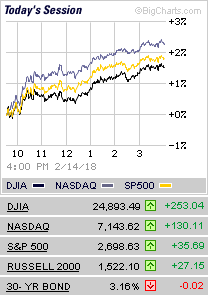Readers of my blog know that permanent life insurance can serve as the cornerstone of your plan to achieve financial independence. Using a whole-life or indexed universal life policy, you can quickly build a cash value that will enable you to grow your wealth while financing everything from new cars to retirement—without relying on banks.
It’s important to understand the distinction between whole-life insurance and indexed universal life (IUL). Both provide the death benefits that can create peace of mind. Both can be used as forced savings vehicles, and both include investment capabilities that allow you to compound your cash value tax-free. And both can be customized to serve as your “Private Vault,” allowing you to take control of your financial destiny.
But a key difference between the types of insurance has to do with the returns generated from the policies’ cash-value component. Whole-life policies pay a fixed rate of return. For the policyholder who is planning for retirement or other long-term goals, this can create great peace of mind. Rather than investing their money in the market, hoping for adequate gains and worrying about a market crash, they can rely on a guaranteed, fixed rate of interest and a steady compounding of their money.
IULs, however, offer more investing flexibility for your cash balance. They are designed to capture market appreciation while providing security against market losses. A portion of the premiums IUL holders pay are allocated between two cash-value accounts; one of those accounts generates a guaranteed rate of return just as with a whole life policy. The other tracks a market index and lets policyholders participate in market growth.
Policyholders are free to allocate funds between the two accounts as they choose once a year. IULs are particularly attractive in periods where interest rates and inflation are projected to rise. Exposure to the market allows policyholders the potential to keep up with inflation and it can protect them from being locked into returns that are based on older, lower interest rates.
In fact, a policyholder may assign all of his or her cash to the market-participation account or, conversely, to the fixed-rate account based on the projected interest-rate and inflation environment.
IULs have a nifty available feature that can help give policyholders peace of mind. Known as a “floor,” it’s the maximum percentage that you can lose. All IULs have a 0% floor—meaning that regardless of how much the index underlying your market-participation account falls, you won’t lose any capital. Some policies are even structured to have a floor of 1% or 2%, guaranteeing you a positive return.
You should be aware that IULs also feature a “cap,” or fixed
percentage of the market’s growth that you capture. If the market rises 15% and your policy has a cap rate of 13%, for example, your growth will be capped at 13%.
The fact that financial independence can be achieved by using either whole-life or indexed universal life policies is good news for those who want to break their reliance on banks and other middlemen and take control of their financial destiny. It means that whatever the projected financial environment, a comfortable option is available. Don’t hesitate to ask me more about using insurance to get started on a “Private Vault” strategy.

